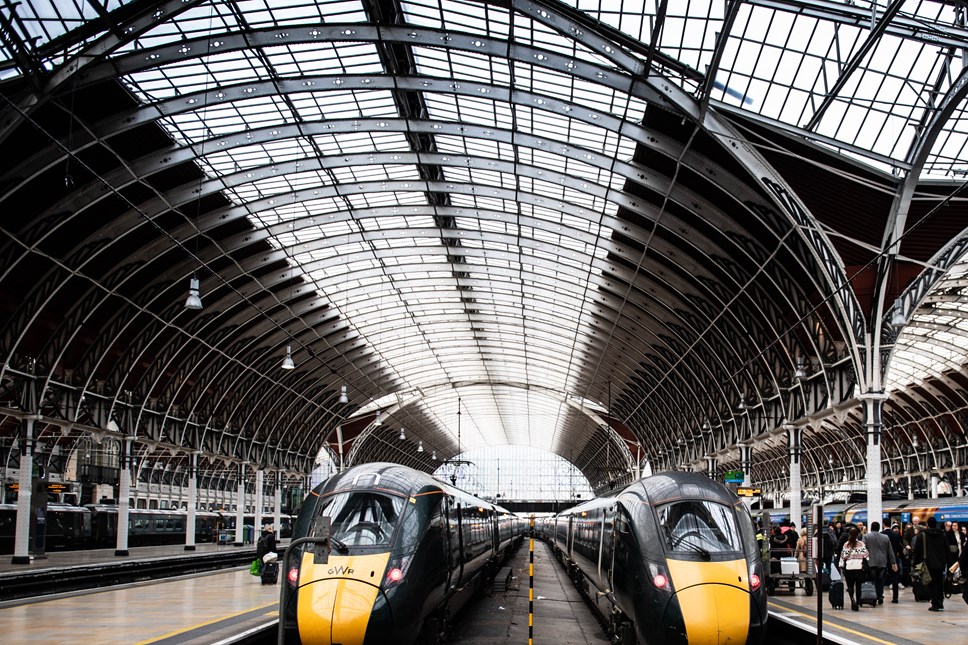
GWR launches new timetable in the Thames Valley with changes to 75% of all trains
The new December weekday train timetable for the Thames Valley has been launched today, providing faster journey times, more seats and more frequent services to key locations. Users are being warned to check before travelling to avoid being caught out.
Regular users have been asked to check their new journey times for the biggest timetable change on the network since 1976. 50% of GWR’s stopping services between Reading and London Paddington have been transferred to TfL Rail.
The improvements are so significant, especially for those who travel regularly and used to catching a particular service every day, that GWR launched an awareness campaign to highlight the changes ahead, and make sure customers are prepared. It is encouraging customers to find out more at www.gwr.com/timetable2019 before they head to their local station.
GWR continue to operate services between Reading and London Paddington calling at intermediate station stops, and from today many will extend to Didcot with 12-carriage Class 387 electric trains in the evening peak where they are needed most.
These dovetail with TfL’s stopping services to provide an improved overall service with significant extra capacity on the Reading to Paddington corridor.
Chief Executive of the Thames Valley Chamber of Commerce, Paul Britton, said:
“An extra 10,000 seats in the morning peak into London Paddington is great news for businesses in the Thames Valley and London. Updated technology, new facilities and reduced journey times for business travellers and commuters will allow them to use their time more effectively.”
Henley Trains’ Neil Gunnell added:
“We in the Thames Valley are finally reaping the benefit of the very big but delayed electrification of the Great Western Main Line and newer, bigger and better trains for the commute.”
On the popular Reading to Newbury route, passengers benefit from an increase to three trains an hour, journey-time improvements of around five minutes, and a more consistent service throughout the day with up to two fast services an hour running through to London Paddington.
New Intercity Express Trains already operating between Reading and London Paddington will also see journey-time improvements; average direct journey times will consistently be 22 minutes, compared to between 25 and 30 minutes.
TfL Rail will be introducing a new Contactless pay-as-you-go service on its stopping services from Thursday 2 January, 2020. Customers will be able to use their debit or credit card or mobile device to open gates at stations, ‘touching in’ at the start and ‘touching out’ at the end of their journey.
To support TfL Rail’s payment option, GWR will also offer Contactless at all stations on the direct line of route between London Paddington and Reading.
GWR Managing Director Mark Hopwood said:
“This timetable has been a number of years in the making, enabling us to deliver the benefits of new Intercity Express Trains, and modernised infrastructure, for our customers. With the changes we realise that investment in trains and infrastructure, and deliver on the promise we made to customers for more services, more seats and faster journeys.
“More than 350 extra on-board staff have been taken on, more than 1,200 drivers trained, and we will have extra staff at stations throughout our network to help as we embark on this new journey.
“We have worked hard to help people understand how the changes will affect them. We have spoken with our customers as often as possible, possibly annoyingly so, to help ensure a smooth transition, but we all recognise there will be some issues to iron out as everyone gets used to the changes.”
Those travelling between Reading and Basingstoke will be able to take advantage of a third train an hour at peak times, adding approximately 250 more seats at the busiest times.
Network Rail Route Managing Director for Wales and Western, Mike Gallop, said:
“The timetable change this December will be the biggest since 1976 and will mean faster journeys and more frequent services for passengers.
“It follows unprecedented investment in railway infrastructure including electrification, improved signalling, upgraded stations and much more, which together with the introduction of new trains will transform rail travel.”
In the run-up to the timetable change GWR has sent six million emails to customers; put up hundreds of posters at sites across its network, both at stations and in the community; has run 60 meet-the-manager sessions at stations; has met with transport leaders across the network; and secured hours of airtime across the local media to raise awareness.
